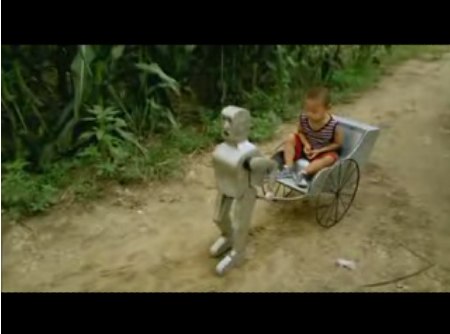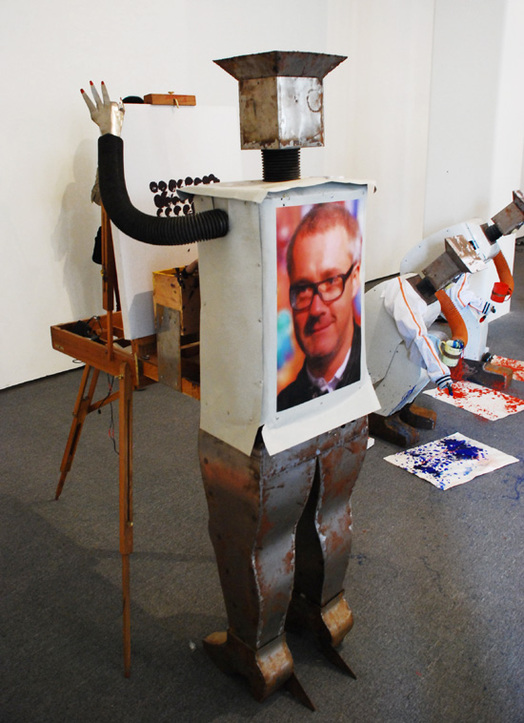Its manifestations have been around and obvious for a while, but I can’t quite tell if shanzhai is played out, over, or still a thing. Shanzhai translates as “mountain fortress” when people want to emphasize its unregulated, somewhat pirate nature, but also “cottage,” when they want to highlight its backwoods, make-do lack of refinement.

In 2007, Wu Yulu was making awesome homemade robots.
The Wall Street Journal hung its 2009 Shanzhai story on a wedding planner’s homebrewed, online-only sendup of CCTV’s Chinese New Year broadcast extravaganza, but in the context of a larger shanzhai trend that celebrated hacking, ingenuity, parody, and knockoffery:
On China’s Internet, blogs, bulletin boards and news sites carry photos of automobiles jerry-rigged to run on railroad tracks (“shanzhai trains”), fluffy dogs trimmed and dyed to look like the national mascot (“shanzhai pandas”) and models of the Beijing Olympic Games’ National Stadium made out of sticks (“shanzhai Bird’s Nest”).
A property developer in Nanjing, hoping to lure business and buzz, set up storefront facades with logos such as “Haagon-Bozs,” “Pizza Huh,” “Bucksstar Coffee,” “KFG” and “McDnoald’s.” Images of what became known as “Shanzhai Street” spread rapidly online.
The blog chinasmack has been my primary source for shanzhai, both for classic examples of pirated brands and electronics [including shots from that Shanzhai Street], but also for just flatout awesome DIYness like this 2009 video of “Shanzhai Drifter,” a kid who’s making smoke in his tricked out Changan delivery truck. Good times.
In 2010, at what might be the first simultaneous zenith and nadir of the contemporary art world’s engagement with shanzhai, Cai Guo-Qiang curated “Peasant da Vincis,” the inaugural show at the Rockbund Art Museum in Shanghai. The relentlessly corporate slickness of the monumental Shanghai World Expo was certainly ripe for questioning and deflation, if not direct criticism.
On the one hand, there were homemade planes and such. And Tao Xiangli did construct this insanely awesome scrap metal aircraft carrier, with shades of a folk art Serra or Burden. [image via the always comprehensive designboom]

And sure, it’s good that Cai turned over an entire floor to Wu Yulu’s Robot Factory. But then Cai also commissioned Wu to make robot re-enactors of modern and contemporary artists at work. Like Yves Klein’s Living Brush?
And Jackson Pollock, and seriously, Damien Hirst? Doesn’t having to put a headshot of the artist your robot is mimicking automatically count as a fail?

Designboom says the artworks these robots created were sold as limited editions. Which only exacerbates the apparently complete absence of Jean Tinguely from Cai & Wu’s Peasant da Vinci colabo. No excuse. [Wu Yulu’s status as the Peasant King of Export Shanzhai was cemented by his 2011 profile in Colors Magazine.]
Anyway, I grew concerned because in yesterday’s chinasmack roundup/translation of Hierarchies of Snobbery and Contempt by Chinese Netizens, the shanzhai option is consistently last in every category. Which, in one sense, sure, but in another, isn’t that the entire point?
